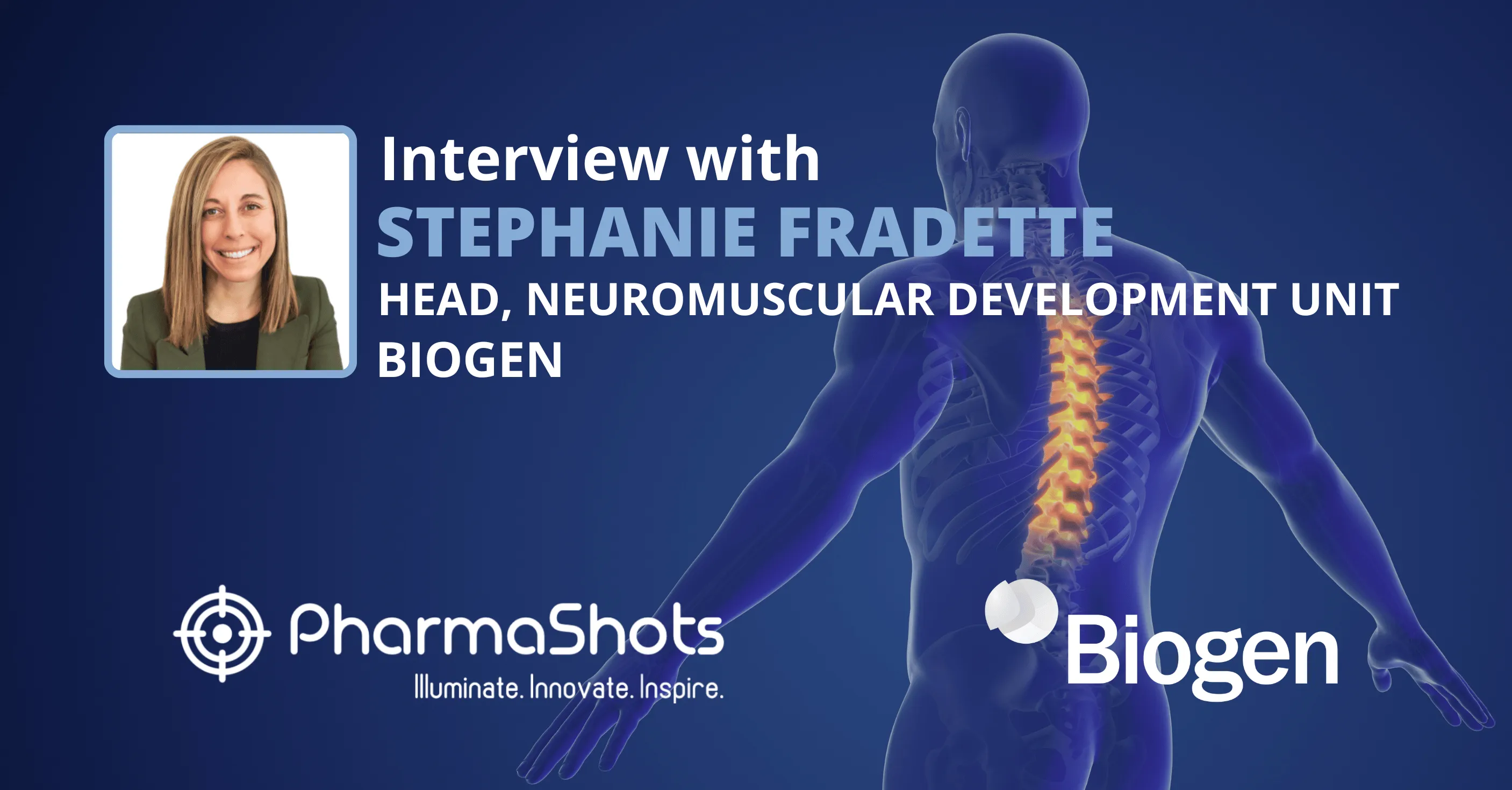
Curbing Misfolded TTR with RNA Therapy: Mina Makar from AstraZeneca in a Stimulating Conversation with PharmaShots
Shots:
-
Misfolded TTR can lead to chronic conditions like ATTRv-PN or ATTR-CM. AstraZeneca’s Wainua (eplontersen) is a once-a-month RNA-targeted medication that suppresses TTR production
-
Mina Makar SVP and Commerical Lead of the Global Cardiovascular, Renal, and Metabolism (CVRM), Biopharmaceuticals Business Unit at AstraZeneca, sheds light on eplontersen and its ongoing P-III clinical trial on ATTR-CM
-
Mina reveals AstraZeneca’s aim to launch 15 new life-changing drugs in CVRM therapies by 2032
Saurabh: Please shed some light on eplontersen (MOA, ROA, formulations, and other details).
Mina: Eplontersen is a once-monthly silencer that provides upstream suppression of transthyretin (TTR) production. It is an RNA-targeted medicine designed to precisely target and reduce the production of TTR protein at its source in the liver to potentially treat all types of transthyretin-mediated amyloidosis (ATTR).
Eplontersen was approved under the brand name Wainua for the treatment of polyneuropathy of hereditary transthyretin-mediated amyloidosis (ATTRv-PN) in the US in December 2023 and is now gaining approvals in additional countries worldwide. Eplontersen is the only approved medicine for the treatment of ATTRv-PN that can be self-administered monthly via an auto-injector. As part of a global development and commercialization agreement, AstraZeneca and Ionis are commercializing Wainua for the treatment of ATTRv-PN in the US. The companies are seeking regulatory approval in other parts of the world where AstraZeneca has exclusive rest of world commercialization and development rights. Eplontersen has received Orphan Drug Designation in the US and the EU for the treatment of ATTR, reflecting the high unmet need in this patient population, and has recently been recommended for approval by the Committee for Medicinal Products for Human Use (CHMP).
Saurabh: What were the findings from the P-III clinical study of eplontersen?
Mina: Eplontersen’s FDA approval for the treatment of ATTRv-PN was based on the positive 35-week interim analysis from the Phase III NEURO-TTRansform trial, which demonstrated consistent and sustained reductions in TTR levels and improvements in neuropathy impairment. Additionally, the trial showed improvements in patients' quality of life (QoL).
Subsequent data at 66 and 85 weeks, published in The Journal of the American Medical Association (JAMA), further reinforced eplontersen's efficacy and safety and tolerability profile. Through 66 weeks, patients treated with eplontersen exhibited statistically significant improvements in all secondary endpoints compared to the placebo group. At the end of treatment, the data confirmed sustained benefits in serum TTR concentration, halted disease progression, and ongoing improvements in patient QoL through 85 weeks.
Building on these results, we are also advancing our efforts with the CARDIO-TTRansform trial, which evaluates eplontersen for the treatment of ATTR-CM. Fully recruited with over 1,400 participants, this global, double-blind, randomized, placebo-controlled trial is the largest of all ATTR-CM trials. With cardiovascular mortality as a primary endpoint, CARDIO-TTRansform aims to provide valuable insights into the evolving treatment landscape for ATTR-CM.
Saurabh: What makes eplontersen apart from other existing treatment options for ATTR?
Mina: Eplontersen stands out due to its demonstrated ability to reduce TTR protein levels, halt disease progression, and improve both neuropathy and QoL outcomes. Its monthly dosing regimen, which can be self-administered via an auto-injector, provides added convenience, allowing patients and their caregivers to manage the condition at home. We believe eplontersen is well-positioned to compete in this space, where treatment options for patients with ATTR are limited, and a significant unmet need exists for new therapies.
Saurabh: Are there any pipeline products (incl. early stages) being assessed/ expected for the treatment of ATTR-CM?
Mina: By 2032, we aim to lead the world in CVRM therapies, with as many as 15 new life-changing medicines. Our comprehensive approach focuses on both early and late-stage developments, allowing us to detect, diagnose, and treat patients more effectively. Our ambition is to build the most comprehensive and fast-growing amyloidosis portfolio in the industry, addressing both the unmet medical need and the severe impact of conditions like ATTR-CM.
Eplontersen’s US approval for polyneuropathy in ATTRv-PN, and now a positive CHMP opinion, have laid the foundation for expanding our focus on cardiomyopathy. The next step in our portfolio development is to leverage our expertise in heart failure and cardiovascular disease to help more patients get accurately diagnosed and treated—especially those with systemic, progressive, and fatal conditions like ATTR-CM, which typically leads to progressive HF and often death within three to five years from diagnosis.
One of our key initiatives is the CARDIO-TTRansform Phase III trial, which is evaluating eplontersen for the treatment of ATTR-CM. This global, double-blind, randomized, placebo-controlled study is the largest trial of its kind with over 1,400 participants and is designed to gather robust data in a broad patient population including both patients naïve to stabilizers and those already on treatment, capturing differentiated data points such as cardiovascular mortality. This comprehensive study aims to inform the dynamic and evolving ATTR-CM treatment landscape and provide clinically relevant insights for the cardiology community.
Saurabh: Can you provide us with an overview of the CARDIO-TTRansform Cardiac Magnetic Resonance Imaging Substudy developed by AstraZeneca and its significance?
Mina: The CARDIO-TTRansform Cardiac Magnetic Resonance Imaging (CMR) Substudy is part of the larger Phase III CARDIO-TTRansform trial. As the largest CMR study conducted on ATTR-CM patients, the substudy enrolled 157 patients across four countries and included a broad global population of patients from the main study with hereditary and wild-type ATTR-CM.
This substudy is designed to assess the impact of eplontersen on cardiac amyloid load, tracking changes in the heart’s structure and function through CMR with extracellular volume (ECV) mapping. Its primary objective is to measure the percentage change in amyloid burden from baseline at various intervals (25, 49, 97, and 140 weeks) in patients treated with eplontersen versus placebo. By providing key data on the impact of eplontersen on cardiac amyloid load, this substudy will deliver critical insights into the potential structural and functional impact of eplontersen therapy on ATTR-CM.
Image Source: Canva
About the Author:
Mina Makar
%201.png)
Mina Makar is the Senior Vice President and Commercial Lead of the Global Cardiovascular, Renal, and Metabolism (CVRM), BioPharmaceuticals Business Unit at AstraZeneca. In this role, Mina addresses the critical unmet needs in four interconnected disease areas: metabolism, heart failure, cardiovascular disease, and renal diseases. Through expanding the use of medicines today, and developing the next wave of innovations while advancing the pipeline, he drives the ambition to improve and save lives for the millions of people who are living with the complexities of CVRM diseases.
His 30-year healthcare career began as a pharmacist and includes over two decades with AstraZeneca, encompassing experience in marketing and sales, payer and access strategies, as well as leadership and engagement. His previous role as SVP of US Respiratory & Immunology highlights a track record of achievement, including significant franchise growth and successful new product launches, such as the company's first respiratory biologic.
Makar's dedication to the use of digital technologies and engaging with industry partners to transform science, has been pivotal to driving earlier diagnosis for CVRM patients, advancing understanding of disease drivers, and helping to bring medicines to patients faster. His leadership in CVRM extends to embedding sustainability into every initiative, from the laboratory to the patient to strengthen healthcare systems to be more accessible and resilient.
Related Post: Cardiology Care and Beyond: Mina Makar from AstraZeneca in a Riveting Dialogue Exchange with PharmaShots
Tags

Saurabh is a Senior Content Writer at PharmaShots. He is a voracious reader and follows the recent trends and innovations of life science companies diligently. His work at PharmaShots involves writing articles, editing content, and proofreading drafts. He has a knack for writing content that covers the Biotech, MedTech, Pharmaceutical, and Healthcare sectors.














